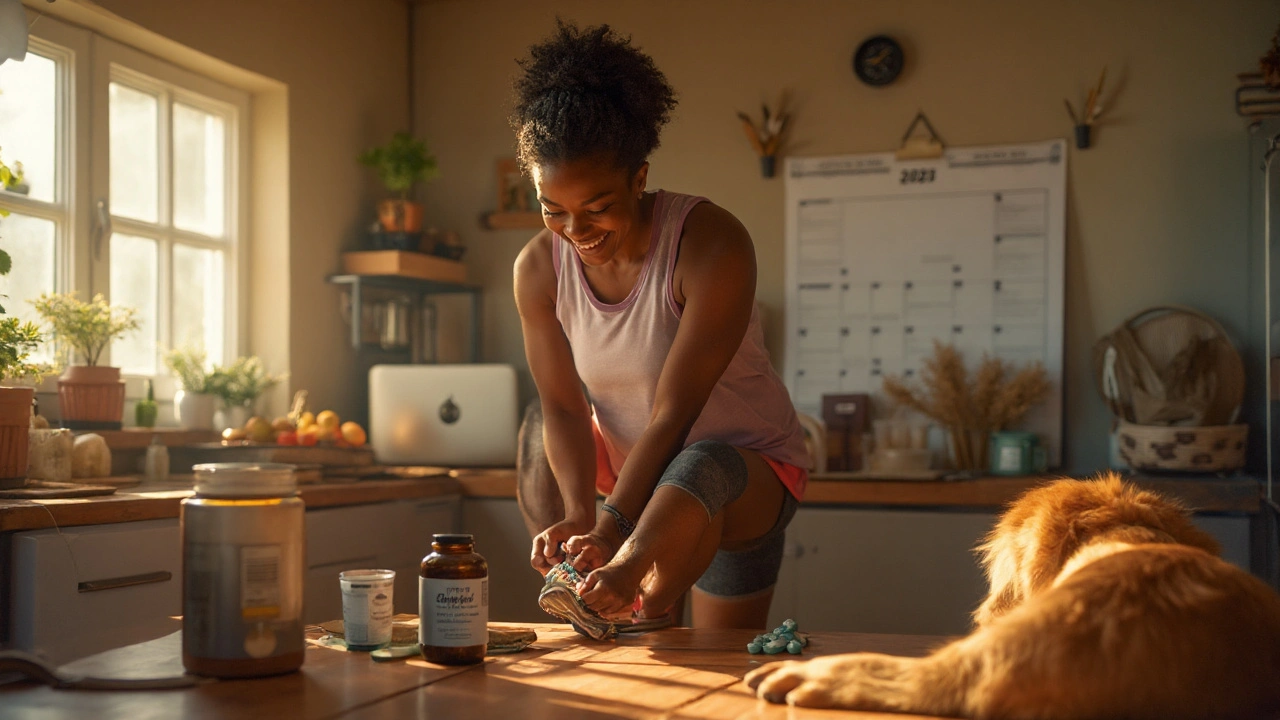Osteoarthritis – What It Is and How to Manage It
Osteoarthritis (OA) is the most common form of arthritis. It happens when the cartilage that cushions your joints wears down, causing bone‑on‑bone friction. The result? Stiffness, swelling, and pain that make everyday moves feel like a chore.
Most people notice OA in the knees, hips, hands, or spine, but any joint can be affected. Age is a big risk factor—your cartilage naturally loses elasticity over time. Still, injuries, obesity, genetics, and even repetitive work can speed up the wear and tear.
Spotting the Symptoms Early
Early OA often shows up as a vague ache after activity. As it progresses, you might feel:
- Joint pain that eases with rest but flares after use
- Stiffness, especially in the morning or after sitting
- Swelling or a feeling of warmth around the joint
- Grinding or clicking noises when you move
- Reduced range of motion, making it harder to kneel, lift, or grip
If you notice these signs, a quick visit to your doctor can confirm OA with an X‑ray or MRI. Early diagnosis lets you start treatment before the damage gets worse.
Practical Treatment Options
There’s no cure for osteoarthritis, but you can control pain and keep joints moving. Here are the most effective strategies, all backed by real‑world use and the latest guidelines.
1. Medications – Over‑the‑counter NSAIDs like ibuprofen help short‑term pain, but doctors often recommend prescription options for stronger relief. Celebrex (celecoxib) is a popular choice because it targets inflammation with less stomach irritation. Always follow dosing instructions and discuss any heart or kidney concerns with your pharmacist.
2. Weight Management – Carrying extra pounds places more stress on weight‑bearing joints, especially the knees and hips. Even a modest 5‑10 % weight loss can shrink pain scores by up to 30 %.
3. Physical Therapy – A therapist can design a low‑impact exercise plan that strengthens the muscles around the joint, improving stability and easing strain on the cartilage. Think swimming, stationary biking, or gentle yoga.
4. In‑Home Remedies – Applying ice for 15 minutes after activity reduces swelling, while heat before moving can ease stiffness. Topical creams containing capsaicin or menthol also give a brief pain reprieve.
5. Supplements – Some people find glucosamine, chondroitin, or turmeric helpful, though results vary. If you’re already taking a supplement, keep an eye on any side effects and talk to your healthcare provider.
6. Injections – For moderate to severe pain, corticosteroid shots provide temporary relief, while hyaluronic acid injections act as a lubricant. These are usually spaced several months apart.
7. Surgery – When conservative measures fail, joint replacement (knee or hip) can restore function. Modern implants last 15‑20 years on average, and most patients return to light activities within weeks.
Beyond these, lifestyle tweaks make a big difference. Stay active, avoid prolonged sitting, and use supportive shoes. Simple changes like adding a daily short walk or swapping a sofa for a standing desk keep joints lubricated.
Living with osteoarthritis isn’t a sentence to immobility. With the right mix of medication, movement, and smart habits, you can keep pain under control and enjoy the activities you love. If you’re unsure which approach fits you best, start a conversation with your pharmacist or primary care doctor—they’ll help tailor a plan that matches your health profile and budget.

Does Collagen Type II slow aging? Get clear, evidence-backed answers on joint benefits, dosing, UC-II vs hydrolyzed forms, safety, and how to see real results in 2025.
- Read More
